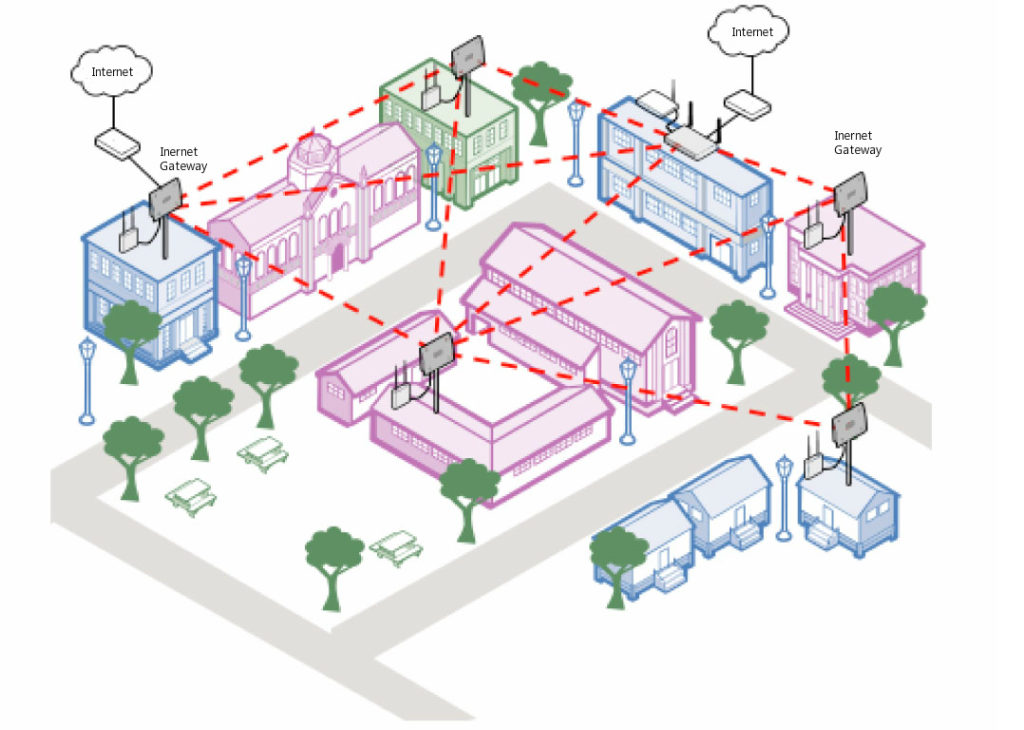Long Range Outdoor AP plays a crucial role in maintaining a reliable WiFi connection. While indoor WiFi networks have become commonplace, ensuring a stable outdoor WiFi connection presents unique challenges. This is where outdoor WiFi access points (APs) come into play. In this article, we will delve into the concept of outdoor WiFi APs and how they can assist you in upholding a stable, high-speed internet connection beyond the reach of your regular networks.
Why Do You Need a Long Range Outdoor AP?
The importance of outdoor WiFi connections cannot be overstated, particularly in business environments. Homeowners and business owners alike rely on Long Range Outdoor APs to expand their network coverage to open spaces. For homeowners, this means enjoying seamless connectivity in gardens and patios. Business owners, especially those in the food and beverage industry like cafes and restaurants, depend on outdoor WiFi to offer dependable internet access to patrons. This service enhances customer experience by allowing guests to peruse menus, check emails, and engage on social media. Positive customer experiences, in turn, translate into favorable reviews and repeat visits, making outdoor WiFi an indispensable asset for establishments looking to thrive in today’s competitive market.
What is the Long Range Outdoor AP?
The Long Range Outdoor AP, or Access Point, is a specialized wireless device crafted for extending your network’s coverage beyond conventional indoor boundaries. Unlike typical home routers, which primarily serve indoor areas, these outdoor APs excel at delivering WiFi signals across vast outdoor spaces, making them the perfect choice for homeowners and businesses seeking dependable outdoor internet access. Long Range Outdoor APs typically feature robust, weatherproof enclosures to withstand the elements, while supporting high-speed WiFi standards for fast and reliable connections. They come in various designs and sizes to cater to different needs, including smaller units for residential use and more robust, high-capacity models for commercial and industrial applications.
Factors Impacting Long Range Outdoor AP WiFi Signals
Physical Obstacles
Physical obstacles, such as buildings, trees, and other structures, can significantly impact outdoor WiFi signals. Understanding how these obstacles affect signal propagation is essential for planning the installation of your outdoor WiFi APs. In some cases, you may need to adjust the positioning of your APs to avoid signal interference.
Weather Conditions
Weather conditions can have a substantial impact on outdoor WiFi connections. Rain, snow, and fog can reduce signal strength and reliability. Extreme temperatures, especially in very hot or cold climates, can also affect the performance of outdoor WiFi APs. When installing these devices, it’s essential to choose equipment designed to withstand the specific weather conditions in your area.
Frequency Band Selection
The choice of WiFi frequency bands, such as 2.4GHz and 5GHz, can significantly impact signal quality. In general, the 2.4GHz band offers better range but may be more susceptible to interference, while the 5GHz band provides faster speeds but has a shorter range. Selecting the appropriate frequency band depends on your specific needs and the environment in which the outdoor WiFi AP will be installed. Many APs on the market provide 2.4G frequency, such as FS AP-T567 and AP-T565. They are both Outdoor Access Points, and they can achieve seamless roaming and cloud managed to ensure business continuity.
Security Measures
Security is a critical aspect of outdoor WiFi connections. Implementing strong encryption, such as WPA3, is essential to protect your network from unauthorized access. Additionally, setting up a guest network with restricted access can enhance security, ensuring that guests can access the internet without compromising your primary network’s security.
Proper Installation of Long Range Outdoor AP
Selecting the correct installation site for your Long Range Outdoor AP is crucial. Take into account the following key factors:
Power Supply: It is essential to guarantee that your Long Range Outdoor AP receives a consistent power supply. This may involve the use of waterproof cables and appropriate power adapters to ensure uninterrupted operation.
Elevation: Position the AP at an optimal height to optimize signal coverage while avoiding potential obstructions that might degrade the signal quality.
Weatherproofing: Deploy weatherproof enclosures or protective covers to shield the Long Range Outdoor AP from the impact of adverse weather conditions, ensuring its longevity and performance reliability.
After installation, configure the outdoor AP to meet your network requirements. Test the connection to ensure everything is operating correctly and that the device provides the necessary signal coverage. Additionally, it is essential to conduct regular checks on the device’s performance, clearing any dust or dirt, to ensure stability.
Conclusion
Long Range Outdoor AP provides a practical solution to extend your network coverage and ensure a seamless internet connection, whether you’re at home, in a commercial outdoor space, or hosting an event. By understanding the benefits of outdoor WiFi APs, knowing how to choose the right device, and following best practices for installation and maintenance, you can enjoy uninterrupted connectivity in your outdoor spaces, no matter the weather or location. Don’t let the great outdoors limit your online experience – invest in outdoor WiFi APs and stay connected wherever you go.
Related Articles

